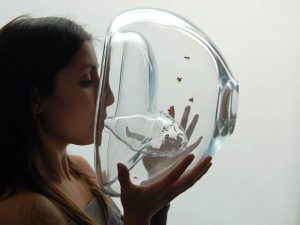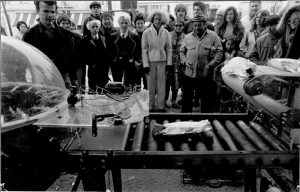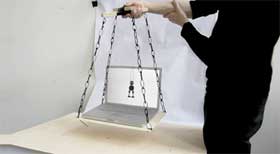 A few weeks ago, the students of the Digital Media Class at the UDK (University of the Arts) in Berlin were assigned a brief called Analog Laptop Extension.
A few weeks ago, the students of the Digital Media Class at the UDK (University of the Arts) in Berlin were assigned a brief called Analog Laptop Extension.
A laptop has become a mother ship of an ever expanding range of physical devices that address increasingly personal matters together with the purely functional office or workplace situations. These devices, together with their software, are nevertheless often designed without much consideration of the physicality of the laptop and its usage situation. The computer is an abstract source of energy, computation and screenspace to many such devices. Jussi Angesleva and Joachim Sauter challenged their students to rethink the laptop as a physical object with extended functionality.
Most of the projects are brilliant and i was surprised to see how sleek the design of some of these projects echo is.
I’d actually love to buy a few of them:
i- sleep, by Ivonne Dippmann, is a comfy pillow for laptop, a kind of super sophisticated version of the Keyboard Emergency Airbag. It works like one of those airplane safety vest. If you fall sleepy, close the laptop. An air cushion, connected by a valve with the fan of the computer, automatically blows itself up. 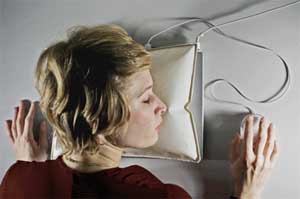
There’s more! A playlist is activated by a music program. This playlist can be individually created or is automatically generated by the program. The titles being played correspond to the duration of the desired sleeping time. You can choose to be to be waken up at the end of the last tune. The waking time, the tone and the distances of the repeating waking noise are individually adjustable.
CPU warmup, by Felix Hardmood Beck, is one of those why-didn’t-i-think-about-that projects! The object harnesses the heat of the battery and turns the laptop into a kind of hot water bottle to warm beds.
For the fun:
Le TipKic, by Markus Kison & Christian Wolf, transforms the laptop into a Tipp-Kick (a traditional German game of mini-football) arena where you can re-create the Football world cup finals 2006: France vs. Italy, starting at the dramatic moment of 4:5 for France. The aim is to revenge the dishonour of Germany during the semi-finals against Italy.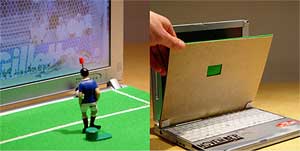
The project uses the FujitsuSiemens Lifebook which is equipped with a touch screen and a flash application. If the shooter hits the screen with the physical ball, the computer registers the position of the contact point and compares it with the area of the goal and the position of the goalkeeper.
The penalty spot on the synthetic turf is identical to the position of the left mouse button next to the keyboard. If the player shoots by hitting the top of his figure, the button is pressed and the application sends a signal to the goalkeeper to jump for the ball. After the shot of the player, the computer simulates the result of Italy‘s shot by chance.
Andreas N. Fischer added strings to animate a digital marionette on the laptop (image at the top of this entry.) The application reads out the Powerbook´s motion sensor´s position data and uses it to move the digital marionette. If you tilt the notebook to the left, the marionette on the screen reacts to gravity and also swings in this direction. The next step would be to equip two or more laptops with the handles and stage a play at your local kindergarten… Oh! That would be so cool.
More awesomeness: Finger Trap to deter unsolicited use of your laptop; timingbydata; newsprint mimicry; a rather threatening iRazor Pro; the LapChat; very neat Thread; the iRuler.

